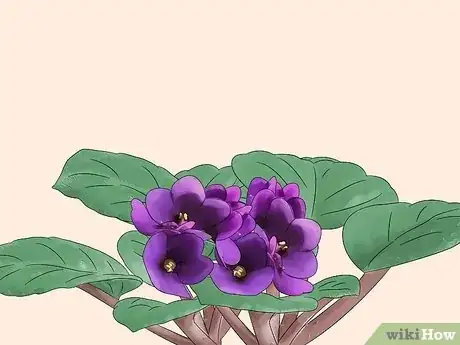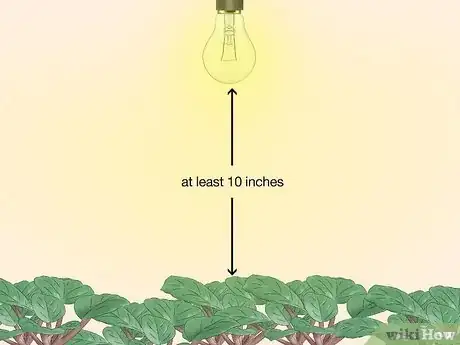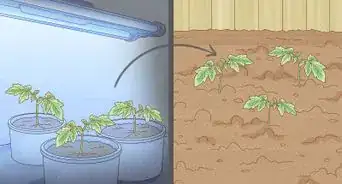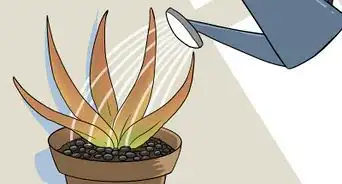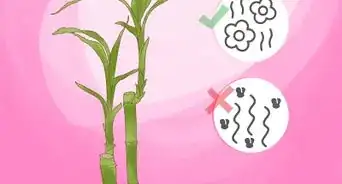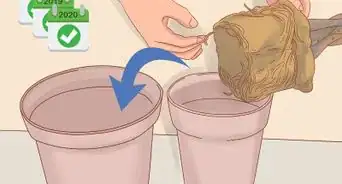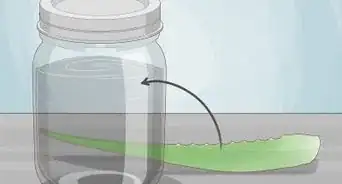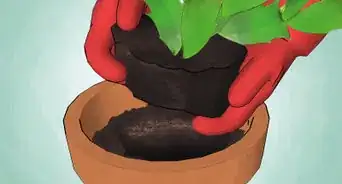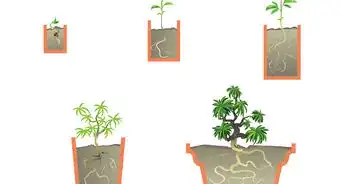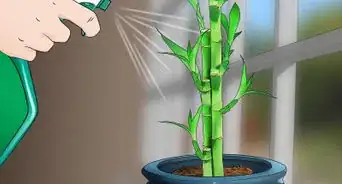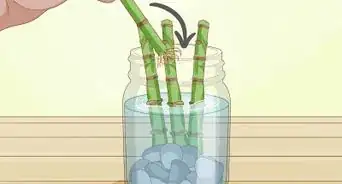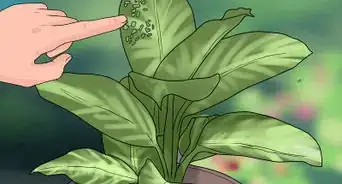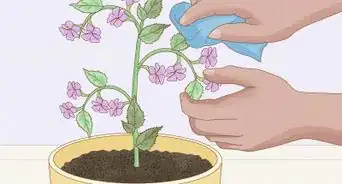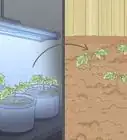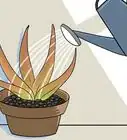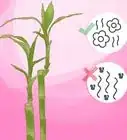This article was co-authored by Lindsey Swett. Lindsey Swett is a Plant Specialist and the Owner of Niche Plant Shop in Boston, Massachusetts. She has over a decade of experience working in several plant settings, including golf courses, public parks, and commercial garden centers. Her focus now is on helping plant owners care for their indoor plants. Lindsey holds a Master of Landscape Architecture from The University of Michigan.
wikiHow marks an article as reader-approved once it receives enough positive feedback. In this case, several readers have written to tell us that this article was helpful to them, earning it our reader-approved status.
This article has been viewed 165,951 times.
Plants need light to grow and flourish. Some plants cannot survive outdoors in the winter, and if you do not have a yard, your only choice might be to grow plants indoors. Indoor plant growing can be difficult, though. Positioning your plants in a window does not always provide enough light, and it can sometimes be too much direct light. Grow lights are one solution to indoor plant growing.[1] There are different kinds of grow lights and light system setups that vary according to the type of plant being grown. Use these steps to use the proper grow lights when growing plants indoors.
Steps
-
1Determine what type of plant to grow.
- Purchase the seeds for the variety of flora you wish to grow indoors. Base your decision on the space in your home and the amount of electricity you can use. Vegetable plants require more light than many exotic plants, for instance.[2]
-
2Learn what color light is needed.
- Research the plant you have chosen to determine the colors on the light spectrum your particular plant utilizes most. Most plants use the entire spectrum, but red and blue are the most important. Your research should tell you what color your plant craves most. For example, African violets do best under blue light, but they also need red to flower.[3]
- Usually, for better results, it's a good idea to invest in a full spectrum lamp.
Advertisement -
3Choose your bulbs.
- Pick incandescent bulbs for a superior source of red light. These bulbs are most commonly used in the home. The amount of blue light emitted from incandescent bulbs is poor, however.
- Select fluorescent bulbs to achieve as much as 3 times more light intensity than incandescent bulbs. There are different bulb options within the category of fluorescents. Cool white bulbs are good for plants needing blue and yellow-green light. Warm white bulbs give off more red and orange light. Full-spectrum fluorescent bulbs are the best of both worlds; they are used for many different indoor plants.
- Opt for high-intensity discharge lamps if you are growing a large amount of plants. They are extremely energy efficient and produce the most light out of the three types. They are also the most expensive type of bulb.
-
4Set up your light system.
- Find a location in your home to set your plants and install the lighting. Hang the bulbs the proper distance away from your specific type of plant. The distance between light and plant varies, but at least 10 inches (25.4 cm) is a good rule. Avoid placing lights more than 40 inches (101.6 cm) from the plant.
-
5Provide the proper duration of light.
- Give your plants a break from grow lights periodically. Plants need rest periods in order to respire. A common duration of light is between 8 to 12 hours, but some plants require more and some require less.[4]
-
6Maintain your bulbs and plants.
- Rotate your plants every week so each side receives the same amount of light.
- Change out bulbs when they begin to age. This is especially important for fluorescent bulbs, which dim at the ends over time.
- Water and fertilize your plants as needed.
Community Q&A
-
QuestionDo I wait until germination to use a light?
 Community AnswerThat will depend on the particular plant you're growing. Do some research on the individual plants to see what kind of light schedule they require for proper growth.
Community AnswerThat will depend on the particular plant you're growing. Do some research on the individual plants to see what kind of light schedule they require for proper growth. -
QuestionWhat watt should the bulb be?
 Community AnswerIf the socket says not to exceed 60 watts, it is referring to the dangers of high heat output associated with incandescent bulbs. However, LEDs do not emit dangerous levels of heat. If your fixture says “not to exceed 60 watts” but you want to use a 100-watt equivalent LED bulb, this would be safe to do so.
Community AnswerIf the socket says not to exceed 60 watts, it is referring to the dangers of high heat output associated with incandescent bulbs. However, LEDs do not emit dangerous levels of heat. If your fixture says “not to exceed 60 watts” but you want to use a 100-watt equivalent LED bulb, this would be safe to do so. -
QuestionIs two hours per day under a grow light enough to grow plants?
 Community AnswerNo, they should be left under the grow light for at least 5 to 6 hours a day for optimal growth.
Community AnswerNo, they should be left under the grow light for at least 5 to 6 hours a day for optimal growth.
Things You'll Need
- Plants
- Installation tools
- Fertilizer
- Grow lights
- Water
